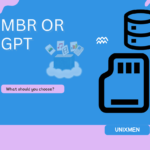
If you’re planning to run an email marketing campaign from a linux-based system, know that there are plenty of email clients to choose from. However, to ensure that the campaign goes according to plan and delivers the desired results, you must choose a client that effectively minimizes bounce rates. The good news is that the process isn’t much different from Windows systems.
Even if you’re someone who prefers a native application over webmail interfaces, there are email clients like Thunderbird, Geary, Mailspring, etc. to set you up with the right configuration. For help related to integration, check out this helpful article.
For this guide, we’ll focus on the best ways to reduce bounced emails for those using Linux/Unix systems. Let’s go!
Key strategies for minimizing bounce rates
1. Keep your list clean
Regularly auditing and cleaning your email list is essential to keep the bounce rates to a minimum. Removing invalid or inactive email addresses helps prevent hard bounces, which occur when emails are sent to addresses that no longer exist or have become invalid. In Linux/Unix systems, you can utilize email validation APIs or scripts to automate the process and ensure only legit recipients receive your message.
2. Monitor blacklists
Being blacklisted can severely impact email deliverability and increase bounce rates. That’s why regularly monitoring email blacklists ensures that your domain or IP address is not listed due to suspicious or spammy activity. Tools like MXToolbox can help you proactively check for blacklists and take necessary actions to address any issues that may arise.
3. Implement SPF, DKIM, and DMARC
These are authentication protocols and they play a crucial role in verifying the legitimacy of email senders and preventing email spoofing. SPF (Sender Policy Framework) specifies which IP addresses are allowed to send emails on behalf of a domain. DKIM (DomainKeys Identified Mail) adds a digital signature to emails in order to verify their legitimacy.
And DMARC (Domain-based Message Authentication, Reporting, and Conformance) provides a framework for email authentication and reporting. Implementing these protocols enhances email deliverability and reduces the chances of emails getting marked as spam or bounced.
4. Check Reverse DNS (rDNS) Records
Valid rDNS records help establish the authenticity of your email server’s IP address. Many email servers use rDNS to verify the legitimacy of the sender, and having an invalid rDNS record can lead to emails getting bounced or being marked as spam. Ensuring that your server’s IP address has a valid rDNS record is critical if you want to maintain proper email deliverability.
5. Use proper email headers
Properly formatted email headers are necessary for making sure that emails get delivered successfully. Including accurate headers such as “From,” “To,” and “Return-Path,” helps recipient servers verify the sender’s identity and prevents emails from being marked as spam or bounced.
6. Maintain good IP reputation
When it comes to email reputation, your email server’s IP reputation directly impacts deliverability rates. To stay safe, avoid sending emails from servers that have a poor reputation, as this could lead to emails being flagged as spam or bounced by recipient servers. If you’re using a shared server, make sure that other users are not engaging in spammy activities as that could have a negative effect on your IP reputation. This is easier said than done, but totally worth it.
7. Follow best practices
Adhering to best practices for sending emails helps maintain a positive sender reputation and minimize bounce rates. This includes sending emails at appropriate (not suspicious) frequency, honoring unsubscribe requests without too much delay, and providing clear opt-in/opt-out options to recipients.
8. Regularly monitor your bounce reports
Last but not the least, setting up systems to monitor bounce reports allows you to identify and address issues that may be causing emails to bounce. Analyzing bounce messages helps pinpoint the reasons for bounces, such as invalid email addresses or full mailboxes, which in turn allow you to refine your email lists and improve deliverability over time.
Final words Reducing bounce rates on Linux and Windows involves similar strategies using email deliverability tools. These tools help ensure emails reach their intended recipients without bouncing back. If you require email list validation for your OS, go ahead and click on the link. We promise you’ll never go back to anything else!





